- table of contents
-
- 1. What kind of knives should be sharpened?
-
2. What is the condition of the knife?
- 2-1 Knives that are not suitable for sharpening
- 2-1-1 Knives with holes or protrusions
- 2-1-2 Knives that are too thin and the tip does not hit the whetstone
- 2-1-3 Ceramic knives
- 2-2 Sharpening should be done about once a month
- 2-3 If it's in this condition, try sharpening it yourself
- 2-4 Cases where it's best to ask a professional
- 2-4-1 Knife with a large chip on the blade
- 2-4-2 A knife that has been sharpened repeatedly over a long period of use and has become blunt
- 2-4-3 Noodle cutting knife (soba cutting knife)
- 2-4-4 Bread knife
- 2-5 Kamaasa Shoten sharpening service
-
3 What do I need to sharpen it myself?
- 3-1 The most common sharpening tools are "whetstones" and "sharpeners"
- 3-2 There are four types of whetstones
- 3-2-1 For chipped blades, use a rough whetstone with a grit size of 80 to 500
- 3-2-2 To achieve sharpness, use a "medium whetstone" with a grit size of around 800 to 2000.
- 3-2-3 To further improve the sharpness, use a finishing whetstone with a grit size of 2000 or more
- 3-2-4 "Correction stone" for maintaining whetstones
- 3-2-5 Recommended whetstones for beginners
- 3-3 Sharpening knives on aluminum foil or the back of a ceramic utensil is a temporary solution
- 3-4 Where to buy whetstones and sharpeners
- 3-4-1 For convenience, 100 yen shops, Nitori, Muji and other stores
- 3-4-2 We recommend specialty stores that carry professional tools
- 3-5 Other things to prepare/nice to have when sharpening with a whetstone
- 3-5-1 "Whetstone stand" prevents whetstones from shaking and makes them safer
- 3-5-2 A towel to wipe off water splashes and whetstone powder at any time
- 3-5-3 A large container to soak the whetstone in water
- 3-5-4 Apron to protect clothes from splashes
- 3-5-5 Kamaasa Shoten's recommended product: "Toka", an aroma water for whetstones
-
4. How to sharpen a knife
- 4-1 Sharpening a knife with a sharpener (video)
- 4-2 Sharpening a Western knife with a whetstone (video)
- 4-2-1 Understanding the construction of double-edged/Western knives
- 4-2-2 Prepare the grindstone
- 4-2-3 Western-style knives: Sharpening the surface
- 4-2-4 Western-style knives: Sharpening the back side
- 4-2-5 Western-style knives: Removing burrs
- 4-3 Sharpening a Japanese knife with a whetstone
- 4-3-1 Single-edged/Understanding the construction of Japanese knives
- 4-3-2 How to sharpen a Japanese knife
- 4-3-3 Japanese knives: How to sharpen yanagiba and deba knives
- 4-3-4 Remove burrs
- 4-4 How to store whetstones
- 4-5 If you want to learn how to sharpen properly, go to a sharpening class.
- 5 What is the point of sharpening a knife?
1. What kind of knives should be sharpened?
The sharpening method and the tools you should choose will vary slightly depending on the type and condition of your knife. Let's check what kind of knife you have that you want to sharpen.
1-1 Double-edged knife (Western knife)

Western knives have thinner blades than Japanese knives, and most of them are basically "double-edged" knives that are sharpened on both sides. Santoku and Gyuto are called all-purpose knives, and there are a variety of knives, from those that can be used for all kinds of ingredients to those with limited uses such as cutting chunks of meat. Depending on the condition of the knife, sharpening with a sharpener is fine, but sharpening with a whetstone may be necessary.

From the left, sujihiki, bone suki (these two may be single-edged), nakiri, gyuto, santoku, gyuto, and petty
1-1-1 Santoku
This is the most popular type of knife for home use. With a blade shape somewhere between a chef's knife and a vegetable knife, it can be used for all purposes, cutting vegetables, meat, and fish. At Kamaasa Shoten, we receive many requests to sharpen this type of knife.
1-1-2 Chef's knife
In Europe and the United States, Gyuto knives are a popular all-purpose knife. They come in a wide range of sizes, with 18cm and 21cm knives for home use, and many chefs in restaurant kitchens use even larger Gyuto knives.
1-1-3 Paring knife
This is an all-purpose knife with a blade length of approximately 12cm to 15cm that can be used as a secondary knife to a Santoku or Gyuto knife for small ingredients.
1-2 Single-edged knife (Japanese knife)


From the left: Takohiki, Yanagiba, Deba, Ko-deba, Kenmuki, Azumagata Usuba, Kamagata Usuba
Japanese knives are thicker than Western knives, and are sharpened on only one side, making them so-called "single-edged" knives. They are specialized for different purposes, such as filleting fish or cutting sashimi, and are traditional Japanese knives that have been used mainly in the world of Japanese cuisine, such as banquet cuisine and sushi. A whetstone is required for sharpening.
1-2-1 Deba
This is a thick knife for filleting fish into three pieces. It comes in a wide range of sizes so you can choose one that suits the size of your fish.
1-2-2 Yanagiba
Compared to the Deba knife, it is thinner and longer, and is used for cutting sashimi, from shaving fish to flat-cutting it into sashimi. It can also be used to slice meat.
1-2-3 Sickle-shaped Usuba / Eastern-style Usuba
In the world of Japanese cuisine, where beautiful cuts are highly sought after, this knife is used for peeling and slicing vegetables and making decorative cuts.
1-3 Other knives

Top: Tuna knife Bottom: 3 types of eel knife, bread knife, dipping knife, sushi knife, Chinese knife, soba knife (noodle knife)
Chinese knives (double-edged), noodle knives (single-edged), bread knives (serrated), etc. are also knives used by limited people and for limited purposes. They come in a variety of shapes, such as double-edged, single-edged, and serrated, and require special tools and skilled techniques to sharpen, so it is generally best to leave them to a professional.
2. What is the condition of the knife?
Once you know the type of knife you are using, check its condition. Some knives cannot be sharpened with a regular whetstone or sharpener, and are not suitable for sharpening in the first place. We recommend replacing knives in such a condition or type.
2-1 Knives that are not suitable for sharpening
2-1-1 Knives with holes or protrusions
These holes are made to make it easier to peel food, but the sharpening area is very narrow as you can only sharpen the blade up to the area of the hole.
Note: If the knife has a dimpled finish, you can continue to sharpen it even if the blade wears down and reaches the dimple.

Slotted Knife
2-1-2 Knives that are too thin and the tip does not hit the whetstone
If a knife has been repeatedly sharpened and has become thin and has lost its edge, it cannot be sharpened any further because the whetstone will hit the handle.
2-1-3 Ceramic knives
Ceramic knives are not made of metal, but are made of ceramic. They require a special sharpener and cannot be sharpened like metal knives.
2-2 Sharpening should be done about once a month
According to a survey of 206 students at Teikyo Junior College conducted in April 1995 and April 1996, it seems that many households sharpen their knives once a month. Regardless of the quality of the knife, if it is one that you use every day, it is recommended that you sharpen it about once a month, not after it has completely lost its sharpness, but before that happens. Sharpening after the knife has completely lost its sharpness not only takes time, but also wears down the blade more. Tomatoes and chicken skin in particular are good indicators of sharpness. If you cannot cut these two ingredients smoothly, it is best to sharpen them immediately.

Source: Hideko Nagura on the actual care of knives
2-3 If it's in this condition, try sharpening it yourself
If there are no major chips or rust on the blade and it has simply become dull, we encourage you to try sharpening it yourself. Professional sharpening will produce a good finish, but you will have to leave it in for a while and it will cost money to repair. If it is within your ability to do it yourself, we encourage you to try sharpening it yourself.
2-4 Cases where it's best to ask a professional
2-4-1 Knife with a large chip on the blade
The knife in the image below has a large chip, but it can still be used by sharpening it. However, it would take a lot of time to grind it down with a rough whetstone until the chip is gone and then reshape it, so we recommend leaving it to a professional.

2-4-2 A knife that has been sharpened repeatedly over a long period of use and has become blunt
The knife in the image below has been deformed by repeated sharpening over time, and even knives that were initially sharp will lose their thin parts as they are repeatedly sharpened, gradually becoming thicker and more obtuse. Knives that have become obtuse will return to a sharper angle and improve their sharpness if the thickness is reduced from the tip. Reducing the thickness is difficult unless you have the tools you need, such as in knife-producing areas, so it is best to ask a professional.

2-4-3 Noodle cutting knife (soba cutting knife)
The process of making noodles involves stretching the dough thinly, folding it, and then cutting it into thin strips. If the tip of the blade is not straight, there will be some cuts left and the noodles will be connected together. Noodle knives usually have a blade length of about 30 cm and a wide width of more than 10 cm. It is difficult to sharpen the tip of such a knife in a straight line unless you are an experienced craftsman, so it is best to leave it to the professionals.

2-4-4 Bread knife
There are sharpeners available that can be used to sharpen bread knives, but serrated knives generally need to be sharpened one wave at a time with special tools, so if you don't have a bread knives sharpener on hand, you'll need to ask a professional.

2-5 Kamaasa Shoten sharpening service
Kamaasa Shoten also provides knife maintenance services. Please feel free to contact us if you have any problems. Kamaasa Shoten's knife sharpening service
3 What do I need to sharpen it myself?
3-1 There are two types of sharpening tools: "Whetstone" or "Sharpener"
There are two typical tools for sharpening knives: whetstones and sharpeners. Whetstones are a very old tool that has been used to sharpen blades. Whetstones have existed since the Stone Age, and it is thought that naturally formed whetstones were used at first. Later, people began to process whetstones to sharpen blades more effectively. Generally, most people sharpen their knives themselves, and many households use sharpeners.

Water Sharp
According to a survey on knife sharpening conducted by Research Panel in 2017, over 50% of people sharpen their knives before using them.

Source: " Daily Research: Do you sharpen your knives at home? " Research Panel
Next, according to a survey conducted by Felissimo Monokotozukuri Lab in 2018 on how people take care of their knives, 40% of people use a sharpener, 20% use a whetstone, and more than half of people take care of their knives themselves.

Source: " Click and answer the survey: How do you take care of your knives? " Felissimo Monokotozukuri Lab

Sharpener
There are two types of sharpeners: a "tabletop type" that you place on a table and a "rod type" that you hold in your hand. You can easily sharpen your knives and restore their sharpness. The tabletop type in particular can be used easily without having to worry about the angle at which you place the blade.
3-1-1 The difference between whetstones and sharpeners is how long they maintain their sharpness
So, what is the difference between these two?
Sharpeners are suitable for maintenance and light sharpening to maintain the condition of blades. They use a rod-shaped or wheel-shaped whetstone to make the edge of the blade jagged so that it can be temporarily sharpened, so strictly speaking it cannot be called "sharpening," but it is an effective method when you are in a hurry.
On the other hand, whetstones are used to remove the dull parts of a blade and form a new blade. Although the sharpening ability of the person doing the sharpening will vary, sharpening with a whetstone will result in a sharper blade that will last longer.
A sharpener can be used to sharpen knives easily, even if you don't have any special skills, but the sharpness of the resulting knife will be less than that of a knife sharpened with a whetstone. Also, it can be used for double-edged knives, but not for single-edged or serrated knives.
Although it takes some effort to learn how to sharpen a knife with a whetstone, it will give the knife a sharp edge that lasts longer. It can be used for most knives, except for serrated knives.
3-2 There are four types of whetstones
Whetstones are roughly divided into four categories according to their purpose: rough whetstones, medium whetstones, finishing whetstones, and correction whetstones . Rough whetstones, medium whetstones, and finishing whetstones are numbered according to their grain size, with the coarser the number being smaller and the finer the number being larger.

Image of the grit size of whetstones (from left: rough whetstone, medium whetstone, finishing whetstone)
3-2-1 For chipped blades, use a rough whetstone with a grit size of 80 to 500.
A rough whetstone is used to straighten out a chipped blade. A rough whetstone alone will not make a sharp knife.
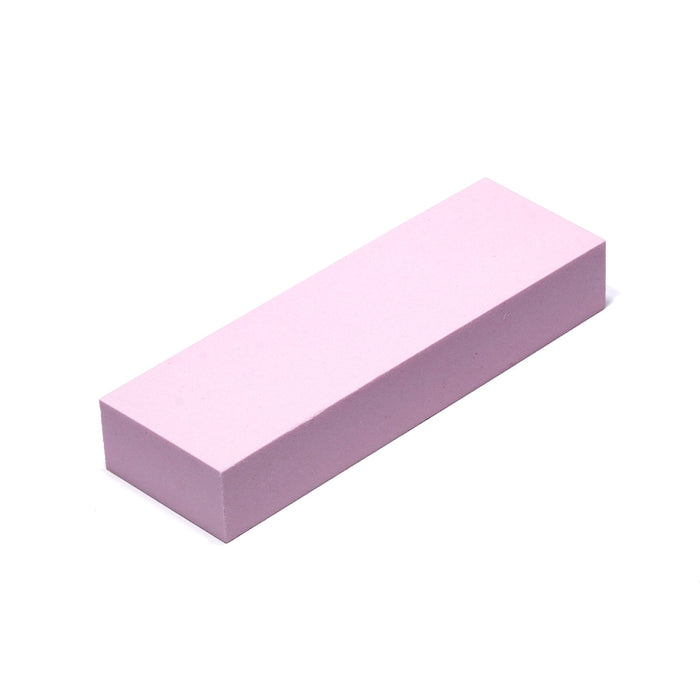
Arato-kun Small Rough Whetstone #220
3-2-2 To achieve sharpness, use a "medium whetstone" with a grit size of around 800 to 2000.
This sharpens the blade so that it can cut. When the blade has lost its sharpness or there is no chip in the blade, start sharpening with the medium whetstone. If you want to sharpen a household knife, it is a good idea to use this medium whetstone. When you magnify the edge of a blade sharpened with a medium whetstone, it has a fine saw-like edge. This saw-like edge is used to split the fibers of food and cut it.
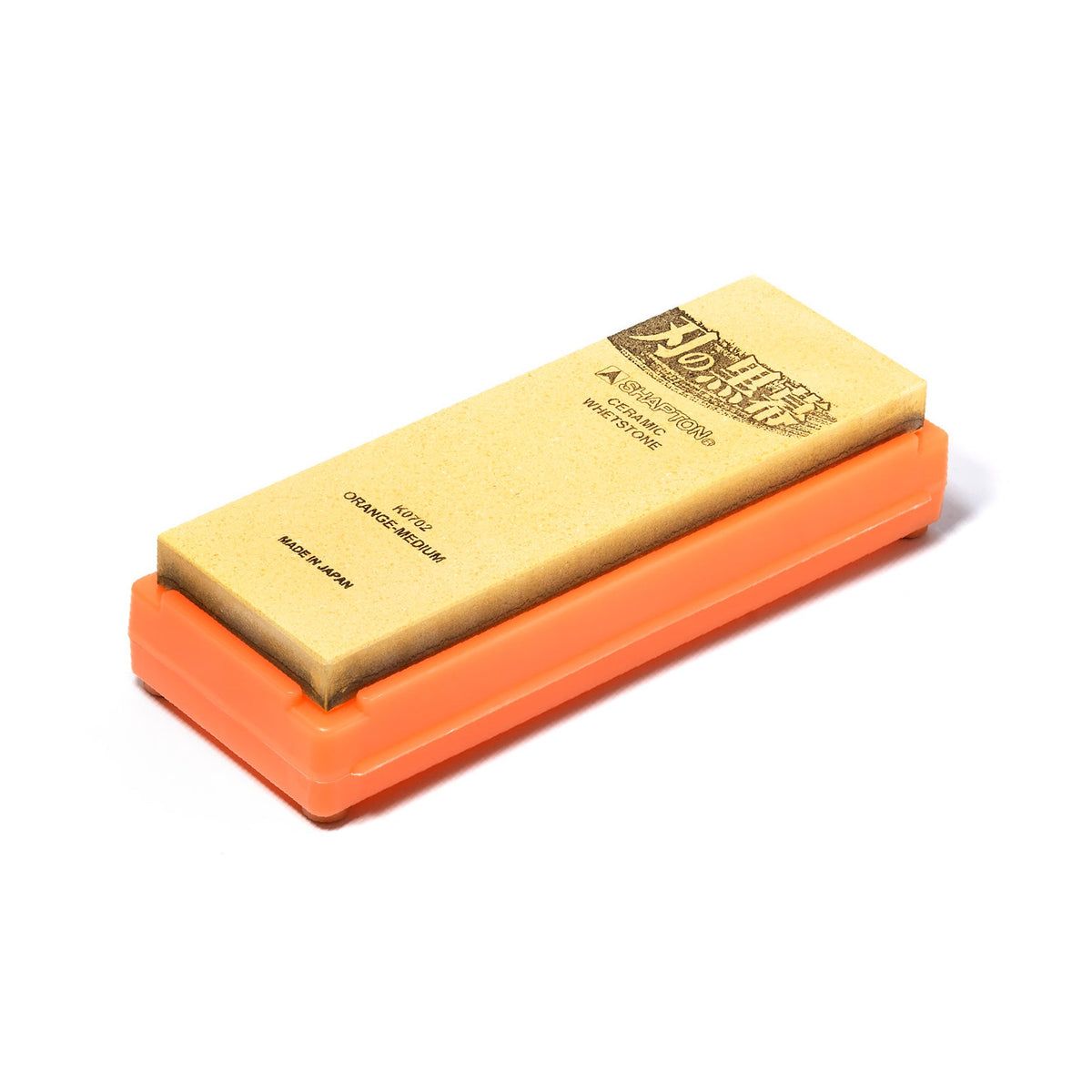
Shapton Blade Mastermind Orange #1000
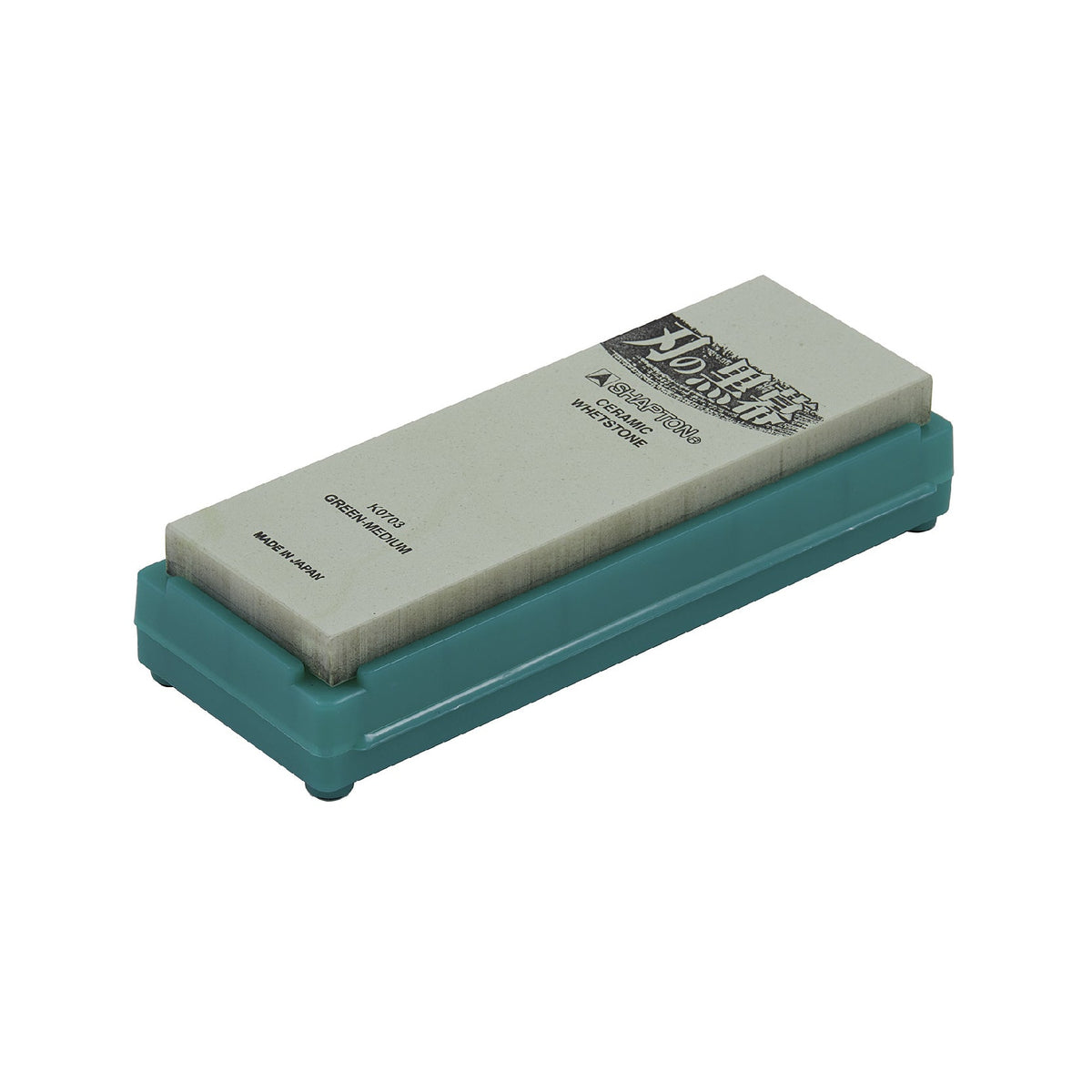
Shapton Blade Mastermind Green #2000
3-2-3 To further improve the sharpness, use a finishing whetstone with a grit size of 2000 or more
It makes the surface of the blade shiny and gives it a smooth cutting edge. In addition, using it will help the blade retain its sharpness for a longer period of time. Sharpening with a finishing whetstone makes the edge smooth, reduces damage to ingredients, and beautifully finishes the cross-section of ingredients. This is why finishing whetstones are often used for Japanese knives (yanagiba, deba, usuba, etc.) in the world of Japanese cuisine, which shows off the beauty of ingredients.

Image of cutting edge condition seen under a microscope
*The grit size of whetstones is determined by the manufacturer's standards, so even if the number is the same, the grit size may be different.
*Some manufacturers may classify them more finely, such as "medium coarse whetstones" between rough and medium whetstones, "medium finishing stones" between medium and finishing whetstones, and even "super finishing stones" above finishing whetstones.
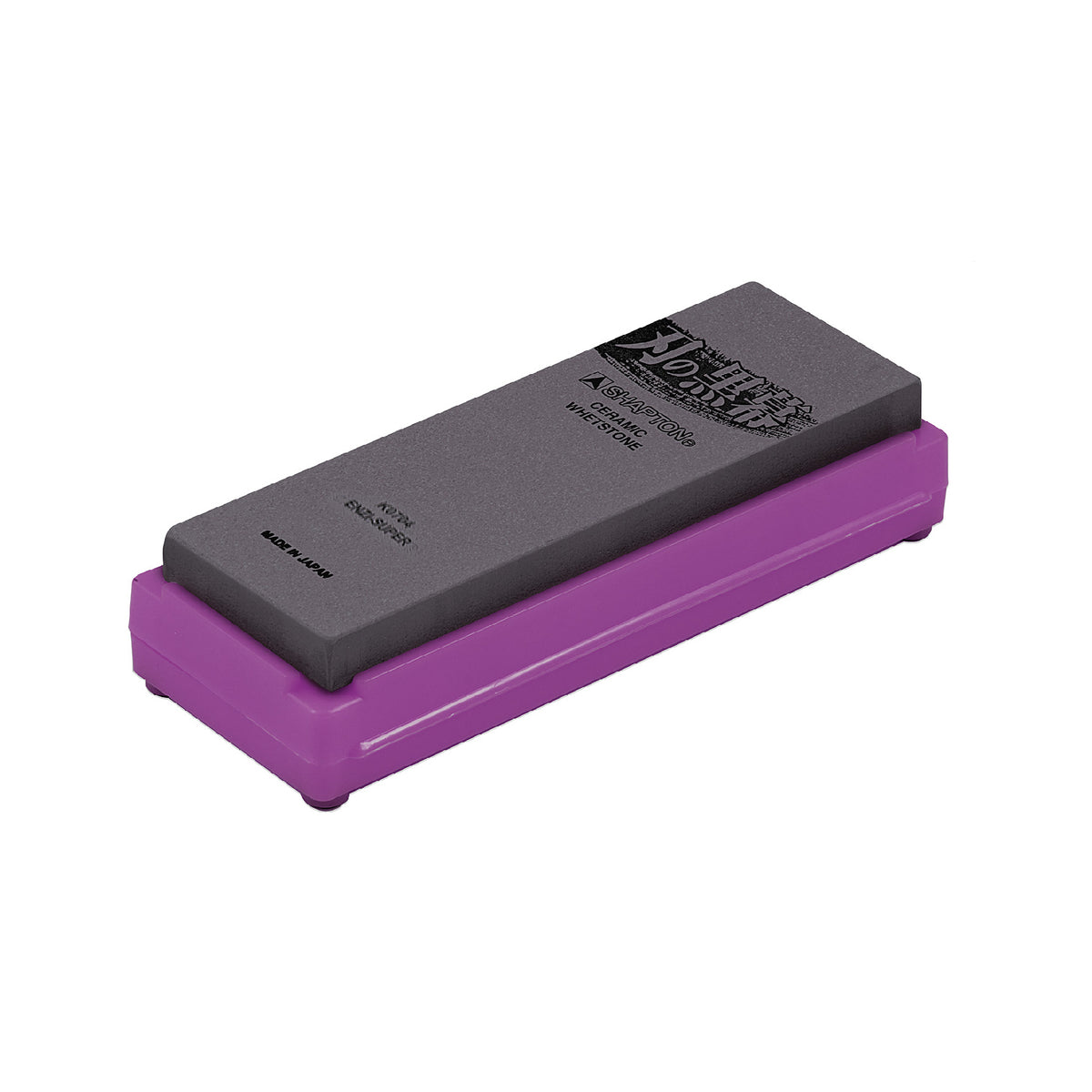
Shapton Blade Mastermind Dark Red #5000
3-2-4 "Correction stone" for maintaining whetstones

Just like the sharpness of a knife, a whetstone will wear down with use, and the center will become hollow and deformed, as shown in the image above.
Continuing to use a deformed whetstone may cause the knife to hit it unevenly and make it impossible to sharpen properly, so in order to keep the surface of the whetstone smooth and level at all times, it is necessary to sharpen it after several uses. This is called "men naoshi" (face repair).
A correction whetstone is used to straighten a surface, and it is a good idea to purchase one when you first buy a whetstone.

Part to be cut for straightening

Correction stones often have a flat surface on one side and grooves on the other.
3-2-5 Recommended whetstones for beginners
For those using whetstones for the first time, we recommend medium whetstones and correction whetstones . Medium whetstones are used frequently with both Japanese and Western knives, and are important for sharpening. Correction whetstones are necessary for sharpening evenly so that the whetstone can be used for a long time, so beginners should use them.
3-3 Sharpening knives on aluminum foil or the back of a ceramic utensil is a temporary solution
I often see articles about using aluminum foil or the bottom of a ceramic container to restore the sharpness of a knife, but just like a sharpener, this is done by using a rod-shaped or wheel-shaped whetstone to make the edge jagged so that it can be temporarily sharpened. Strictly speaking, it cannot be called "sharpening," but it is an effective method when you are in a hurry. If you use a container, use one that you don't mind getting scratched.

3-4 Where to buy whetstones and sharpeners
3-4-1 For convenience, there are 100 yen shops, Nitori, and other stores where you can buy daily necessities.
Sharpeners are easily available at 100 yen shops, Nitori, IKEA, Tokyu Hands, various shopping sites, and the general necessities section of supermarkets. The quality and prices vary widely.
3-4-2 We recommend specialty stores that carry professional tools
There are many different types of sharpeners and whetstones, so beginners are recommended to purchase at a knife specialty store that carries a wide range of knives and maintenance products, and ask the store staff for advice. Kamaasa Shoten, which sells knives, also sells both sharpeners and whetstones.
3-5 Other things to prepare/nice to have when sharpening with a whetstone
3-5-1 Whetstone stand prevents whetstones from wobbling for safety

A stand for fixing whetstones for safe sharpening
If the whetstone moves while sharpening, it can lead to injury or accidents, so the whetstone stand has a non-slip surface to keep the whetstone from wobbling, and the whetstone is placed on it.
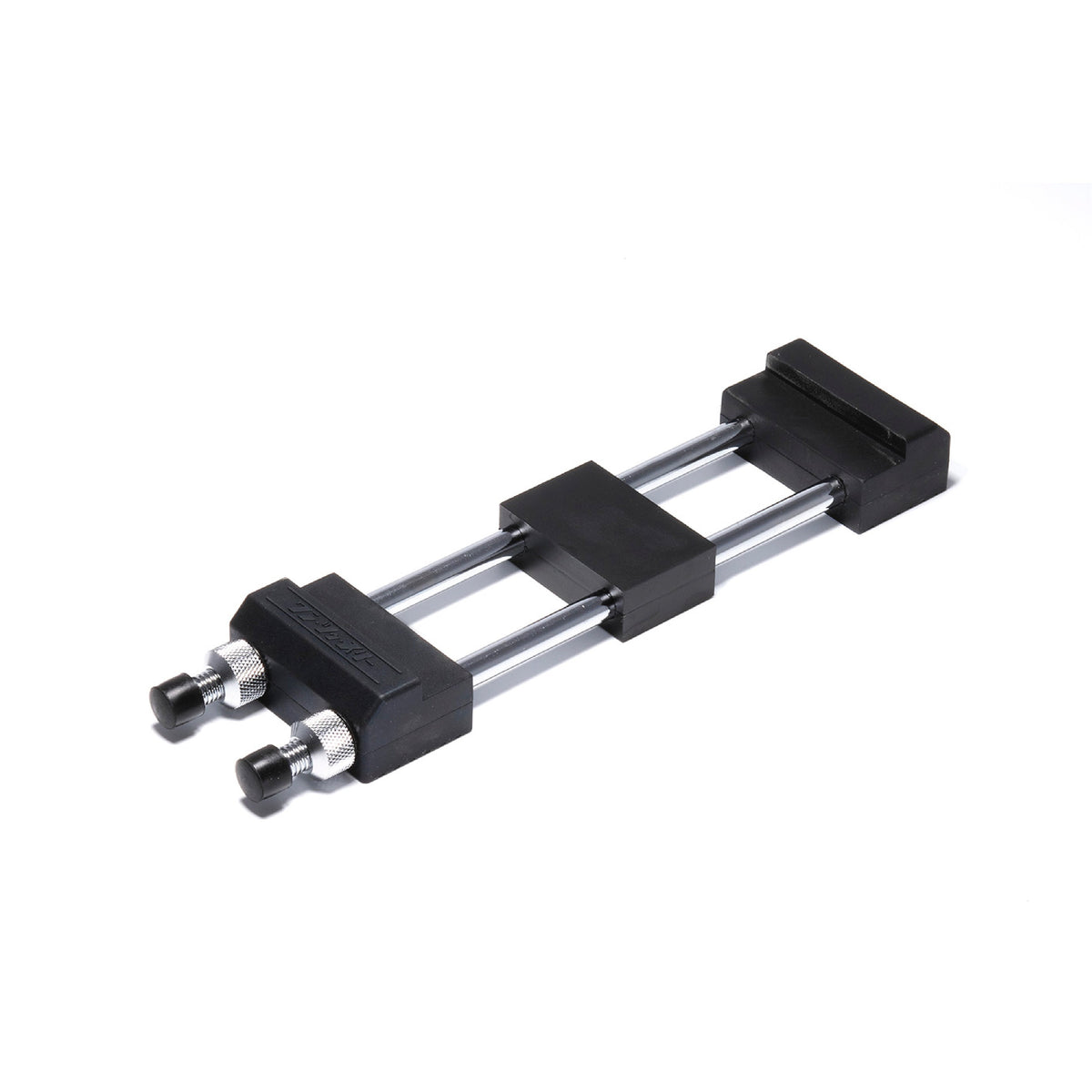
Grindstone rubber stand
3-5-2 A towel that can be used to wipe off water splashes and grinding powder at any time
Water will splash a lot while sharpening, so keep a dry towel ready so you can wipe it off at any time. You can also use a tightly wrung and folded towel as a substitute for a whetstone stand by placing it on the whetstone.
3-5-3 A large container to soak the whetstone in water

The whetstone should be soaked in water every time before use (some whetstones do not require soaking). Prepare a container large enough to cover the entire whetstone in water, and thoroughly soak the whetstone before sharpening.
It can also be used to spray water on the surface of the whetstone to prevent it from drying out while sharpening.
3-5-4 Apron to protect clothes from splashes

When sharpening, water and whetstone powder will splash, so be sure to wear an apron to protect your clothes, or wear clothes that you don't mind getting dirty.
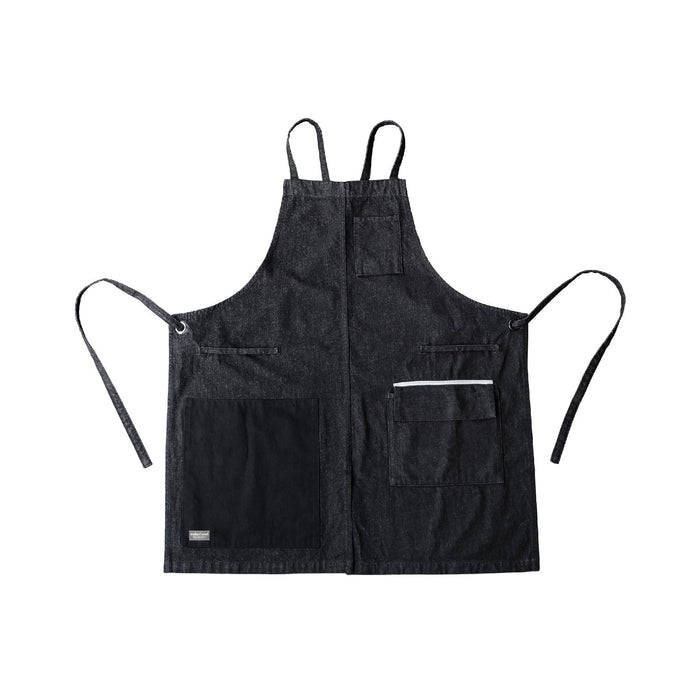
Kamaasa sharpener's apron
3-5-5 Kamaasa Shoten's recommended product: "Toka", an aroma water for whetstones

Kamaasa Shoten sells "Toko", an aroma water for whetstones, which was jointly developed with OSAJI Journal , an online media run by the skincare brand OSAJI . The sound of the whetstone, the feel of the whetstone powder, and the shine of the blade are like meditation as you clear your mind while sharpening your knives. We want you to enjoy the aroma even more and make it a luxurious time to clear your mind. This aroma water for whetstones was created with that wish in mind, and is recommended for those who want to sharpen their knives with whetstones.
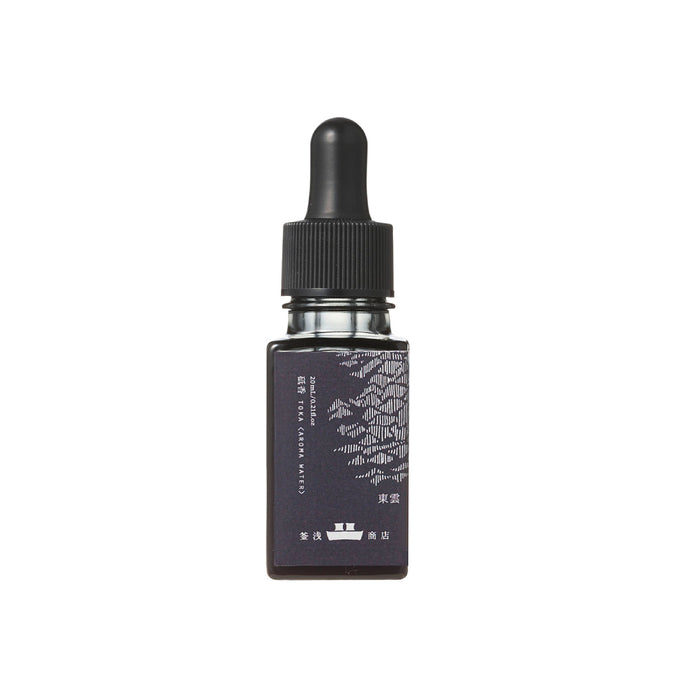
"Toka" aroma water for whetstones
4. How to sharpen a knife
Now that you know what type of knives need to be sharpened and what tools are used, we will explain the essential sharpening method in a video.
4-1 Sharpening a knife with a sharpener (video)
If you have a double-edged Western-style knife, you can sharpen it with a sharpener. Unlike whetstones, there is no soaking time, so it is convenient to use quickly. It is very easy to use, but if you want to keep the sharpness for a long time, sharpening with a whetstone will give you a better finish.
4-2 Sharpening a Western knife with a whetstone (video)
4-2-1 Understanding the construction of double-edged/Western knives

Double-edged knives, like Western knives, also have a "front side (A)" and a "back side (B)." If the knife blade is made of a single piece of steel, you can sharpen it to any angle you like, but sharpening it to about a 7:3 ratio of front side to back side makes it easier to cut and peel.

If the knife blade is made of Damascus, triple-layer steel, or inlaid steel, it should be sharpened so that the front and back sides are at the same angle.

4-2-2 Prepare the grindstone

Before sharpening, soak the whetstone thoroughly in water for about 15 minutes each time. When the whetstone is soaked in water, air bubbles will come out of the whetstone. When the bubbles stop, the whetstone is properly soaked.

Place the whetstone on the whetstone stand. If you don't have a whetstone stand, fold a damp towel and place the whetstone on top of it. Placing the whetstone on a whetstone stand or towel will prevent it from shaking and make it easier to sharpen safely.
4-2-3 Western-style knives: Sharpening the surface

① With your right hand (your dominant hand), firmly grip the base of the handle so that the tip of the blade faces you (A touches the whetstone). Place your thumb close to the tip of the blade to ensure a steady grip. With your left hand (your non-dominant hand), lightly press the tip of the blade with two or three fingers.
*If you are left-handed, the left and right will be reversed.

② Set the blade at about 10 to 15 degrees.

③ Sharpen the knife by dividing the blade length from the tip to the jaw into 3 to 4 blocks. Using the entire length of the stone, move it quickly back and forth while maintaining the angle of ②. At this time, it is a good idea to count how many times you move the knife back and forth.

4) When grinding chips start to pile up where your left hand is touching (known as “burr”), place your left hand on the next block and move it the same number of times until the same amount of burr appears.
4-2-4 Western-style knives: Sharpening the back side

① Turn the blade over (so that the tip faces away from you) and hold it with your right hand, pressing down on the tip with your index finger. With your left hand, place two or three fingers on the blade to lightly press down.
② As with the front side, hold the blade at an angle of about 10 to 15 degrees.
③ As with the front side, use the entire length of the stone and move it quickly back and forth while maintaining the angle of ②. If you are using a single piece of steel, you can set the angle to any angle you like. If you want to change the angle between the front and back, such as "front 7: back 3", it is a good idea to move it back and forth in the same manner, "front 7: back 3".
In the case of Damascus triple-layer steel, sharpening with a "50:50 ratio" keeps the steel at the center, making it easier to achieve sharpness and maintain the sharpness.
4-2-5 Western-style knives: Removing burrs

As a finishing touch, the burrs are removed by scraping them off with newspaper or thick denim. Deburring is a very important task, and if neglected,

If after deburring the blade there is a thin, even, shiny line (about 1-2mm) on the edge, then the knife is sharpened properly. After removing the burr, wash the knife, wipe it dry thoroughly, and apply oil before storing. Freshly sharpened knives are prone to rust and may take on a metallic smell, so it is recommended to wait a while before using them.
4-3 Sharpening a Japanese knife with a whetstone
4-3-1 Single-edged/Understanding the construction of Japanese knives

Single-edged Japanese knives have a unique structure. The front of the blade has a flat surface called "Hira" and a wide slanted surface called "Kiriha", with a line called "Shinogi-suji" between the two. In addition, the tip of the blade has a blunt edge called "Koba" that is about 1mm wide. The Koba maintains the blade's sharpness and makes it less likely to chip. The back of the blade has a depression called "Urasuki". This is a structure unique to Japanese knives that makes it easier to sharpen the back edge flat.
4-3-2 How to sharpen a Japanese knife

Just like Western knives, Japanese knives are sharpened by dividing the blade into several blocks and moving them back and forth on a whetstone. This time, we will start with a medium whetstone to restore the sharpness of the blade without any nicks or thickness.
4-3-3 Sharpening the cutting edge
① Place the cutting edge (A) on the whetstone and sharpen it block by block.

② After sharpening the cutting edge, next sharpen the tip to bring out the "small edge." Raise the back of the knife slightly (about the width of a business card) so that the tip of the blade touches the whetstone slightly, and sharpen each block separately. A shiny line will appear on the edge of the blade after sharpening. At this point, check that the thin shiny line is evenly distributed on the edge of the blade.

③The back of the blade (C) is sharpened by placing the back of the knife firmly against the whetstone. The purpose of the back of the blade is to remove the burr that appears when sharpening the front of the blade, so 5 to 10 strokes back and forth is sufficient.

④ Use a finishing whetstone to sharpen the front and back of the blade following steps ① to ③. By sharpening with a finishing whetstone, you can polish the surface of the blade edge and maintain its sharpness for a long time.
4-3-4 Remove burrs
After sharpening, remove the burr. This is the same method as for Western knives. If the burr remains, the knife will not be as sharp. After removing the burr, wash the knife, wipe off any water thoroughly, and apply oil before storing.
4-4 How to store whetstones
After sharpening, wash off the abrasive powder and wipe off any moisture from the whetstone. Do not store it in direct sunlight, but in a low-humidity place indoors. Be careful not to leave it outdoors or allow it to dry out too quickly, as this can cause it to crack.
4-5 If you want to learn how to sharpen properly, go to a sharpening class.
If you don't want to make any mistakes with your precious knives, we recommend that you attend a knife sharpening class and learn how to sharpen them. You will be using an actual whetstone, so you can experience sharpening knives before purchasing a whetstone.
5 What is the point of sharpening a knife?
5-1 Sharpening your knives will make your food taste better
A sharp knife not only cuts accurately and makes cooking easier , but also:
1. Appearance You can cut ingredients neatly. The cut surface is smooth, making it look beautiful. For example, when cutting vegetables or fruits, a sharp knife will give you a uniform shape and a clean cut surface.
2. Texture The cut surface of the food is smooth. This improves the texture of the food. For example, when cutting vegetables, a sharp knife helps them retain their crispness.
3. Flavor The cut surface of the food is less likely to be damaged. This allows the flavor of the food to be brought out without being lost. For example, when cutting fish, using a sharp knife will bring out the freshness and flavor of the fish to the fullest.
4. Preservation Fine gaps are less likely to form on the cut surface of food. This prevents oxidation and the intrusion of bacteria. Food preservation is improved and freshness can be maintained for a long time. In particular, fine scratches that occur on the cut surface of vegetables and fruits can be minimized.
Reference: Research on the impact of differences in knife sharpness on the quality of food ingredients, by Yukiko Ishihara, Takafumi Nosaka, Jun Ikeno, Misa Fujie, and Yasumi Ueda, Matsue Nutrition, Cooking, and Confectionery College
In other words, sharpening the knife and keeping it sharp has a positive effect on its flavor, texture, shelf life, and appearance.
5-2 If you don't sharpen it, it can lead to poor performance and injury.
On the other hand, what happens if you continue to use a knife without sharpening it? Of course, its sharpness will continue to deteriorate. If you use a dull knife, you will have to use more force to cut ingredients, making it more difficult to do so. Also, if you use too much force, the ingredients may slip and you may get injured. Furthermore, the ingredients may not be cut cleanly, which may affect the appearance and texture of the ingredients. You could buy a new knife without sharpening it, but if the knife is still in a condition to be sharpened, it would be more environmentally friendly and economical to continue using it and sharpen it rather than throwing it away.
5-3 The difference before and after sharpening
How much difference does sharpness have in terms of usability and finish? Let's take a look at how the blade penetrates food and the cut surface before and after sharpening.
5-3-1 Before sharpening (dull blade)
The knife has become so dull that it cannot cut into the food at all. It will crush the food, which will reduce its taste and freshness.

5-3-2 After sharpening (sharpness restored)
I tried cutting a tomato with a knife sharpened with a sharpener. The knife cut smoothly and smoothly, and the cut surface of the food had a different shine and was clean and sharp.

The sharpness of your knife affects the finished product and how it is preserved, so it is important to sharpen your knives regularly. You can do this simply with a sharpener, or you can achieve a truly sharp knife with a whetstone. Sharpening with a whetstone in particular allows you to keep your knife sharp for a long time, once you learn how to do it. Sharpening your knives is environmentally friendly and economical, and a sharp knife makes it comfortable to cook delicious food. We encourage you to try sharpening your knives yourself.



